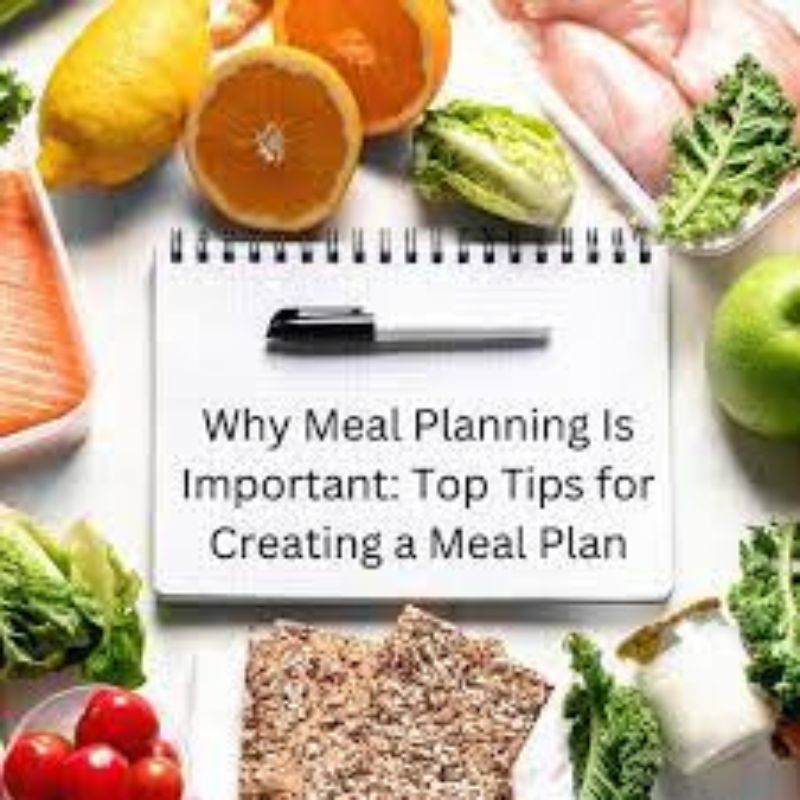Maintaining a healthy lifestyle often starts in the kitchen. But with busy schedules, daily cooking can feel overwhelming. That’s where meal prepping comes in. Learning how to meal prep for a healthy lifestyle helps you stay on track with your nutrition goals, reduce stress, save money, and eliminate last-minute unhealthy food choices.
In this guide, you’ll learn how to meal prep efficiently, what foods to focus on, how to stay organized, and most importantly, how to build habits that actually last.
What is Meal Prepping and Why is it Important?

Meal prepping is the practice of preparing meals or meal components in advance. This could mean cooking entire dishes for the week or simply chopping vegetables and portioning out snacks.
The goal? Save time during the week and make healthy eating easier.
Here’s why meal prep for a healthy lifestyle is becoming a must:
- Saves time and energy on busy weekdays
- Reduces food waste by planning smartly
- Improves nutrition by avoiding fast food or processed meals
- Supports weight management through portion control
- Eases decision fatigue, keeping your health on autopilot
Whether you’re a student, working professional, or full-time parent, meal prepping can bring structure and wellness to your daily routine.
Getting Started with Meal Prep: Step-by-Step
Here’s a beginner-friendly approach to help you get started with meal prep for a healthy lifestyle without overcomplicating things:
Step 1: Plan Your Meals
Start by deciding what meals you want to prep—breakfast, lunch, dinner, or all three. Browse healthy recipes online or refer to trusted platforms like EatingWell or BBC Good Food.
Make sure each meal includes:
- Protein: Chicken, fish, tofu, lentils
- Complex carbs: Brown rice, sweet potatoes, quinoa
- Healthy fats: Avocado, nuts, olive oil
- Vegetables: Broccoli, spinach, carrots, bell peppers
Planning ahead minimizes the risk of skipping meals or grabbing junk food.
Step 2: Make a Shopping List
Based on your meal plan, write a grocery list with exact quantities. Group items by category (e.g., produce, dairy, dry goods) to save time in the store. Apps like Mealime or Paprika can streamline this process.
Step 3: Choose a Prep Day
Pick one or two days in the week to prep, like Sunday and Wednesday. You can batch-cook meals, portion ingredients, or even marinate proteins in advance.
Set aside 1-2 hours depending on how much you’re preparing.
Step 4: Cook and Store Properly
Cook your meals or components, allow them to cool, and then store them in airtight containers. Use glass containers or BPA-free plastic boxes to maintain freshness and prevent spoilage.
Label everything with the name and date to avoid confusion later in the week.
Step 5: Reheat and Enjoy
Most meal-prepped dishes can be quickly reheated in the microwave or stovetop. For salads and fresh items, just toss and eat. This ease is what makes meal prep for a healthy lifestyle sustainable over the long term.
Best Foods for Meal Prepping
Certain foods store and reheat better than others. Here are top meal prep-friendly options:
- Proteins: Grilled chicken, turkey, lentils, chickpeas, boiled eggs
- Grains: Brown rice, oats, couscous, whole grain pasta
- Veggies: Roasted cauliflower, steamed broccoli, bell peppers, carrots
- Snacks: Hummus with veggie sticks, mixed nuts, Greek yogurt, boiled eggs
Avoid foods that get soggy quickly like salads with dressing (store dressing separately) or fried items.
Tips to Stay Consistent with Meal Prep
Like any habit, consistency matters. Here’s how to stay on track:
- Keep it simple. You don’t need 10 gourmet recipes every week. Stick to 2–3 basic meals and rotate.
- Use leftovers creatively. Turn last night’s roasted veggies into a breakfast wrap.
- Invest in tools. A slow cooker, rice cooker, and food scale can make prepping faster and easier.
- Try theme days. For example, “Meatless Mondays” or “Taco Tuesdays” to reduce decision fatigue.
- Track your meals. Use apps like MyFitnessPal to ensure your meals meet nutritional goals.
Benefits of Meal Prep Beyond Nutrition
While it’s easy to focus on the physical benefits like better health and weight control, there are psychological perks too:
- Reduces daily stress by eliminating the “what to eat” dilemma
- Saves money by avoiding takeout
- Improves productivity by reducing energy spent on food decisions
- Encourages mindfulness around what and how you eat
For people managing conditions like diabetes, hypertension, or obesity, meal prepping can even be part of their medical nutrition therapy.
To learn more about the science of healthy eating habits, check resources like Harvard Health or NutritionFacts.org.
FAQs About Meal Prep for a Healthy Lifestyle
Q1: How many days can I store meal-prepped food?
Most cooked meals last 3–5 days in the refrigerator. For longer storage, freeze meals and thaw when needed.
Q2: Can I meal prep if I have a small kitchen?
Yes. Use space-saving tools like stackable containers and prep one meal at a time. Focus on simple, one-pot recipes.
Q3: What if I get bored of eating the same meals?
Variety is key. Change up sauces, spices, or swap out sides. Even one ingredient change can refresh the dish.
Q4: Is meal prep suitable for weight loss?
Absolutely. Pre-portioned meals help manage calories and prevent overeating, making it a useful tool for weight control.
Q5: How do I meal prep on a budget?
Buy ingredients in bulk, use seasonal produce, and plan meals around affordable staples like lentils, eggs, and rice.
Conclusion: Make Meal Prep a Lifestyle, Not a Chore
Learning how to meal prep for a healthy lifestyle is not just a trend—it’s a sustainable approach to self-care. From improving your diet to simplifying your routine, meal prepping gives you back control of your time, health, and energy.
Start small, stay consistent, and adjust as you learn what works for your routine.
Ready to start building healthy, productive habits that stick? Visit MindScribes for actionable tips, expert insights, and wellness tools that support your personal growth journey.

